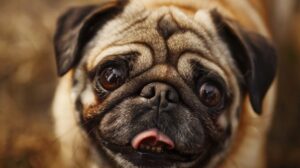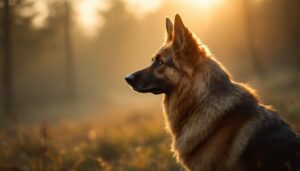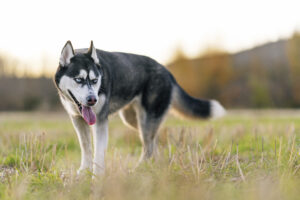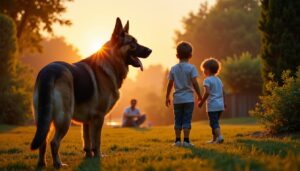There’s something undeniably appealing about large fluffy dog breeds. Their magnificent coats, impressive stature, and bear-like appearance make them seem like the perfect cuddle companions. However, not all large fluffy dog breeds are suitable for every household or lifestyle. While many giant fluffy dogs make wonderful pets, some require specialized care, extensive grooming, or have temperaments that aren’t ideal for certain living situations.
In this comprehensive guide, we’ll explore five large fluffy dog breeds that potential owners should carefully consider before bringing home. We’ll also discuss alternative large fluffy dog breeds that might better suit your lifestyle and provide essential information to help you make an informed decision about adding a fluffy canine companion to your family.
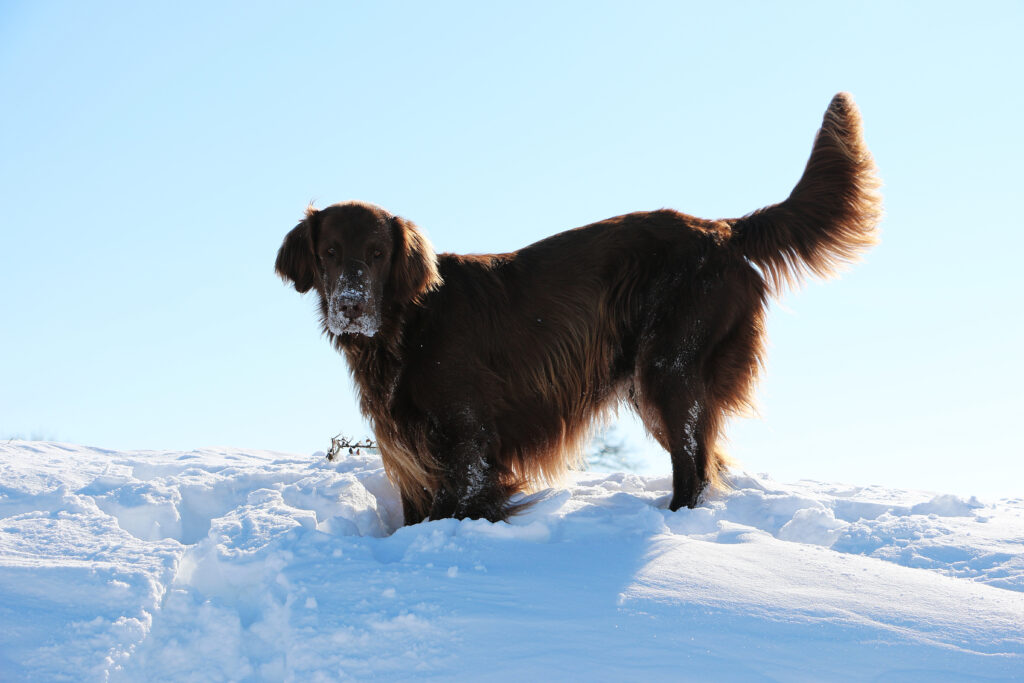
Understanding Large Fluffy Dog Breeds: The Appeal and Challenges
Large fluffy dog breeds have captured the hearts of dog lovers worldwide, and it’s easy to see why. These magnificent animals often feature luxurious double coats, impressive size, and striking appearances. Many big fluffy dog breeds were originally developed for working in cold climates, where their dense fur provided crucial insulation against harsh weather conditions.
However, living with large fluffy dog breeds comes with significant responsibilities. Before falling in love with those adorable fluffy puppies, it’s important to understand what ownership of these majestic animals truly entails:
- Grooming Requirements: Most large fluffy dog breeds have extensive grooming needs. Their thick coats require regular brushing—sometimes daily—to prevent matting and manage shedding. Professional grooming appointments can be costly and time-consuming.
- Space Considerations: These dogs typically need ample living space. While some large fluffy dogs can adapt to apartment living with sufficient exercise, most thrive in homes with yards where they can stretch their legs.
- Exercise Needs: Many giant fluffy dog breeds were bred as working dogs with high energy levels that require regular physical activity and mental stimulation.
- Financial Commitment: From quality food to veterinary care, large fluffy dog breeds often come with higher-than-average ownership costs.
- Climate Adaptability: Dogs with heavy coats may struggle in hot climates, requiring special accommodations during warm weather.
With these factors in mind, let’s examine five popular large fluffy dog breeds that, despite their appeal, might not be the best choice for every household.
5 Large Fluffy Dog Breeds That May Not Be Right for You
1. The Caucasian Shepherd Dog
The Caucasian Shepherd is truly one of the most impressive giant fluffy dog breeds in existence. Originating from the Caucasus Mountains region, these massive guardian dogs can weigh up to 200 pounds and stand nearly 30 inches tall at the shoulder. Their thick, weather-resistant double coat gives them the quintessential big fluffy dog appearance that many potential owners find irresistible.
Why you might want to reconsider:
The Caucasian Shepherd was developed primarily as a livestock guardian with strong protective instincts. These large fluffy dogs are naturally suspicious of strangers and can be territorial. Without proper socialization and training from an early age, they can become overly protective and potentially aggressive toward unfamiliar people or animals.
Their independent nature and strong will make them challenging for first-time dog owners. Training requires consistency, experience, and patience. Additionally, these large fluffy dog breeds shed profusely—especially during seasonal coat blows—and require significant grooming attention to maintain their magnificent coats.
If you’re still drawn to guardian-type large fluffy dog breeds, consider more family-friendly alternatives like the Newfoundland or Great Pyrenees, which typically have more manageable temperaments while still offering protective qualities.
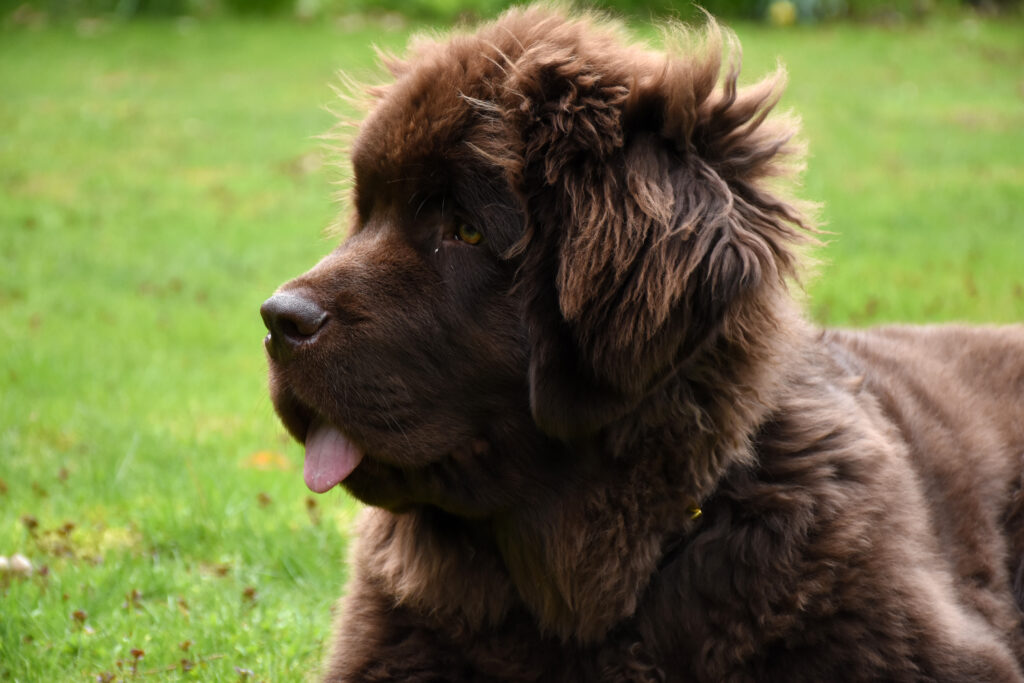
2. The Tibetan Mastiff
The Tibetan Mastiff is perhaps one of the most famous large fluffy dog breeds, known for its lion-like mane and imposing presence. These ancient dogs were traditionally used as guardians of property and livestock in the Himalayan region. Their thick double coats make them appear even larger than their already substantial frames.
Why you might want to reconsider:
While undeniably beautiful, Tibetan Mastiffs present several challenges for the average pet owner:
- Strong-willed temperament: These independent thinkers are not naturally inclined toward obedience. They were bred to make autonomous decisions while guarding, which can translate to stubborn behavior in a family setting.
- Nocturnal tendencies: Many Tibetan Mastiffs remain active and vocal during nighttime hours, reflecting their history as nighttime guardians.
- Excessive shedding: When these large fluffy dogs “blow” their undercoats seasonally, the amount of fur is staggering, requiring intensive grooming.
- Climate sensitivity: Despite their fluffy coats designed for cold weather, these dogs struggle significantly in hot climates, limiting outdoor activity during warm months.
- Social limitations: Tibetan Mastiffs often don’t enjoy the company of unfamiliar dogs and may not be suitable for multi-pet households or frequent dog park visits.
For those drawn to ancient Asian breeds among the large fluffy dog breeds, the Eurasier or the more adaptable Akita might offer similar aesthetic appeal with somewhat more manageable traits.
3. The Saint Bernard
Few large fluffy dog breeds are as instantly recognizable as the Saint Bernard. These gentle giants have captured hearts worldwide with their sweet expressions and remarkable history of alpine rescues. With males weighing between 140-180 pounds, they certainly qualify as giant fluffy dogs with impressive stature and presence.
Why you might want to reconsider:
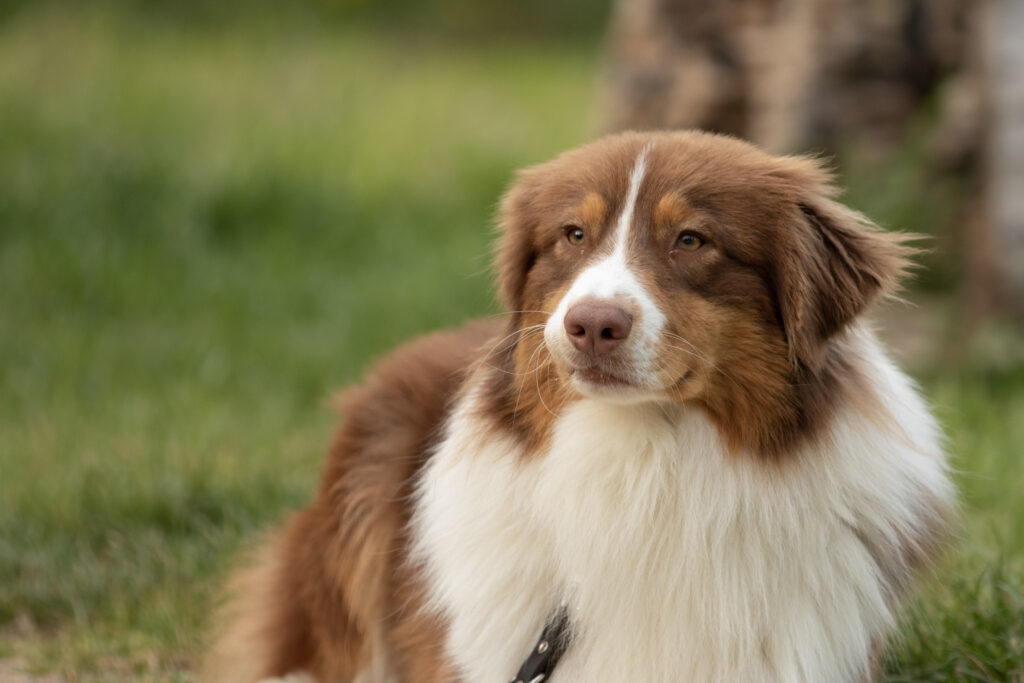
Despite their loving nature, Saint Bernards present some significant challenges:
- Drooling: Saint Bernards are notorious droolers. Their pendulous jowls mean constant cleaning of furniture, walls, clothing, and occasionally even ceilings.
- Short lifespan: Like many giant fluffy dog breeds, Saint Bernards have relatively short lifespans of just 8-10 years, which can be heartbreaking for families.
- Health concerns: These large fluffy dogs are prone to serious health issues including hip and elbow dysplasia, heart conditions, and bloat—all potentially expensive conditions to treat.
- Space requirements: Their massive size means they need substantial living space, making them poorly suited to apartment living regardless of their relatively low energy levels.
- Excessive shedding: These big fluffy dog breeds shed heavily year-round, with even more intensive seasonal shedding periods.
If you love the gentle giant personality but want a somewhat more manageable option, consider a Bernese Mountain Dog or a Newfoundland, which share many positive traits with the Saint Bernard.
4. The Chow Chow
The Chow Chow, while at the smaller end of large fluffy dog breeds (typically 45-70 pounds), makes this list due to its distinctive lion-like appearance and challenging temperament. Originally bred in China for various purposes including hunting, herding, and guarding, the modern Chow Chow has become popular primarily for its unique appearance among fluffy dog breeds.
Why you might want to reconsider:
Chow Chows come with several characteristics that make them challenging companions:
- Aloof temperament: These dogs are typically reserved with strangers and can be standoffish even with family members. They’re not usually the affectionate, eager-to-please pets many families envision when seeking large fluffy dog breeds.
- Territory guarding: Chow Chows tend to be territorial and can be aggressive toward unfamiliar people and animals without proper socialization.
- Stubborn disposition: Training can be challenging as these independent dogs aren’t naturally motivated to please their owners.
- Grooming intensity: Their thick double coats require intensive care to prevent painfully matted fur, especially around the characteristic ruff area.
- Heat sensitivity: Like many large fluffy dog breeds developed for cold environments, Chow Chows struggle significantly in warm weather.
If you appreciate the distinctive appearance of Asian breeds but want a more adaptable temperament, consider a Eurasier or a Keeshond, which offer similar aesthetic appeal with generally more flexible personalities.
5. The Komondor
Perhaps the most distinctive-looking of all the large fluffy dog breeds, the Komondor is instantly recognizable for its unique corded coat that resembles dreadlocks. Developed in Hungary as a livestock guardian, this powerful breed weighs between 80-100 pounds and possesses remarkable protective instincts.
Why you might want to reconsider:
The Komondor presents several specialized challenges:
- Extremely high-maintenance coat: The iconic corded coat requires specialized care unlike any other among large fluffy dog breeds. The cords must be regularly separated by hand to prevent painful matting against the skin.
- Difficult bathing and drying: When wet, the corded coat can take days to dry completely, creating potential for mildew and skin issues if not managed properly.
- Strong guardian instincts: Komondors were bred to make independent decisions while protecting livestock, which can translate to challenging behavior in a family setting.
- Territorial nature: Without extensive socialization, these dogs can be suspicious of all visitors and may become aggressive toward guests in your home.
- Exercise needs: Despite their somewhat shaggy appearance, these are powerful working dogs requiring significant physical activity and mental stimulation.
If you’re drawn to guardian breeds with unique appearances, consider a Bearded Collie or even a standard Poodle for a distinctive look with more manageable temperaments and grooming needs.
Alternatives: Large Fluffy Dog Breeds That Make Great Pets
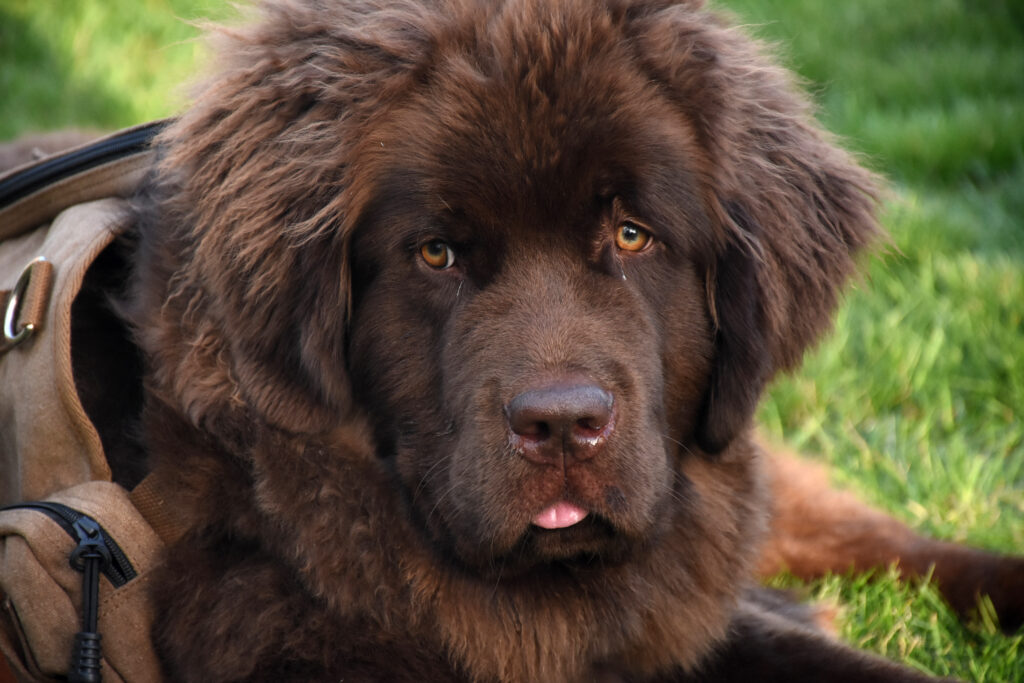
While the above large fluffy dog breeds may present challenges for many households, numerous other fluffy giants make wonderful family companions. Here are some popular large fluffy dog breeds that tend to be more adaptable to various living situations:
Golden Retrievers
While not as giant as some fluffy dog breeds on our list, Golden Retrievers offer a perfect combination of beautiful fluffy coats and family-friendly temperaments. These versatile dogs excel with children, other pets, and adapt well to various living situations. Their moderate shedding is manageable with regular brushing, and their eager-to-please nature makes training relatively straightforward.
Newfoundlands
Often called “gentle giants,” Newfoundlands represent the best qualities of large fluffy dog breeds. Despite their impressive size (up to 150 pounds), they typically have sweet dispositions and remarkable patience with children. While they do shed considerably and require regular grooming, their affectionate nature and trainability make them excellent companions for experienced dog owners with sufficient space.
Great Pyrenees
The Great Pyrenees combines the protective instincts of guardian breeds with a more adaptable temperament, making them one of the more approachable large fluffy dog breeds for families. Their stunning white coats require regular maintenance, but they typically form strong bonds with family members while maintaining a calm, dignified demeanor. They do best in homes with secure yards and owners who understand their independent nature.
Bernese Mountain Dogs
Among the most beautiful of all large fluffy dog breeds, “Berners” are known for their striking tri-colored coats and gentle dispositions. These dogs form deep attachments to their families and generally do well with children and other pets. While they do shed significantly and have unfortunately short lifespans (7-10 years), their affectionate and loyal nature makes them popular family companions.
Eurasiers
A relatively rare breed outside Europe, the Eurasier combines characteristics of the Chow Chow, Wolfspitz, and Samoyed to create a more adaptable family companion. With moderate size (40-70 pounds) and beautiful fluffy coats, they offer the aesthetic appeal of larger spitz-type breeds with more manageable dimensions. They tend to be devoted to their families while remaining calm and dignified with strangers.
How to Choose the Right Large Fluffy Dog Breed for Your Lifestyle
When selecting among large fluffy dog breeds, it’s essential to look beyond their magnificent appearance to ensure a good match with your household. Consider these crucial factors:
Living Space and Environment
While many large fluffy dogs can adapt to apartment living with sufficient exercise, most truly thrive in homes with secure yards. Consider not just your current living situation but potential changes over the next 10-12 years (the average lifespan of many large fluffy dog breeds).
The climate in your region is particularly important for dogs with heavy coats. If you live in a consistently warm climate, breeds developed for cold weather will require special accommodations such as air conditioning and limited outdoor time during hot periods.
Time and Financial Resources
Large fluffy dog breeds generally require significant investments of both time and money:
- Grooming: Most fluffy dogs need regular brushing, with many requiring professional grooming services several times per year.
- Exercise: Many large breeds need daily moderate exercise, while working breeds may require more intensive activity.
- Training: Larger dogs benefit greatly from professional training, particularly during puppyhood.
- Veterinary care: Larger dogs typically have higher veterinary costs for everything from preventative medications to surgical procedures.
Be realistic about whether your schedule and budget can accommodate these needs before bringing home a large fluffy dog.
Family Composition and Social Factors
Consider everyone who will interact regularly with your dog:
- Children: Some large fluffy dog breeds are naturally gentle with children, while others may be too boisterous or protective for households with young kids.
- Other pets: Certain breeds have strong prey drives or same-sex aggression issues that can complicate multi-pet households.
- Visitors: If you frequently entertain or have service providers visiting your home, consider breeds that are naturally more accepting of strangers.
Long-Term Commitment
Large fluffy dog breeds represent a significant long-term commitment. While their lifespans are typically shorter than those of smaller dogs (usually 8-12 years), each of those years requires consistent care and attention. Consider your willingness to manage shedding, drooling, potential health issues, and the inevitable heartbreak of saying goodbye when making your decision.
Large Fluffy Dog Breeds: Common Care Challenges
Regardless of which large fluffy dog breed you choose, certain care considerations are universal:
Managing Shedding
Most large fluffy dog breeds shed significantly, with many “blowing” their undercoats seasonally. Effective shedding management strategies include:
- Regular brushing with appropriate tools (slicker brushes, undercoat rakes, etc.)
- Scheduled professional grooming appointments
- High-quality nutrition to support coat health
- Regular bathing with appropriate products
- Home maintenance routines including frequent vacuuming and lint rollers
Temperature Regulation
Many large fluffy dog breeds were developed for cold climates and struggle in warm weather. Help your fluffy companion stay comfortable by:
- Providing air-conditioned indoor environments during hot weather
- Scheduling walks and exercise during cooler morning or evening hours
- Using cooling mats or elevated beds to improve air circulation
- Never leaving these dogs in cars or unventilated spaces
- Monitoring closely for signs of overheating, which can be life-threatening
Training and Socialization
Proper training and socialization are particularly important for large fluffy dog breeds, as their size means even minor behavioral issues can become significant problems:
- Begin training and socialization immediately upon bringing your puppy home
- Expose your dog to various people, animals, and environments during the critical socialization period (before 16 weeks)
- Consider professional training classes, particularly for guardian-type breeds
- Maintain consistent expectations and boundaries throughout your dog’s life
- Use positive reinforcement methods to build a strong relationship with your dog
Adopting vs. Purchasing Large Fluffy Dog Breeds
If you’re considering adding one of these magnificent animals to your family, you have several options:
Breed-Specific Rescues
Many large fluffy dog breeds have dedicated rescue organizations that specialize in rehoming these specific types of dogs. These rescues often have adult dogs whose personalities are already developed, allowing for better matching with appropriate homes. Adult dogs may also have completed basic training and have established health records.
Reputable Breeders
If you decide to purchase a puppy, research breeders thoroughly. Responsible breeders:
- Perform health testing on breeding stock
- Raise puppies in clean, stimulating environments
- Begin early socialization
- Provide health guarantees
- Support owners throughout the dog’s life
- Never sell puppies through pet stores or online marketplaces
Expect to be thoroughly vetted yourself by good breeders, who will want to ensure their puppies go to appropriate homes.
General Shelters
Don’t overlook general animal shelters, which occasionally have purebred or mixed large fluffy dog breeds available for adoption. Mixed-breed dogs often combine desirable traits from various breeds and may have fewer breed-specific health concerns.
Conclusion: Finding Your Perfect Fluffy Companion
Large fluffy dog breeds offer incomparable companionship for the right households. Their magnificent appearance, loyal nature, and often protective instincts make them beloved pets worldwide. However, responsible ownership requires looking beyond their appealing fluffy exteriors to consider whether their care requirements, temperaments, and needs align with your lifestyle.
While the five breeds highlighted in this article—Caucasian Shepherd, Tibetan Mastiff, Saint Bernard, Chow Chow, and Komondor—present specific challenges that make them unsuitable for many homes, numerous other large fluffy dog breeds can make wonderful companions for prepared owners.
By thoroughly researching breeds, honestly assessing your lifestyle, and committing to meeting your chosen dog’s needs throughout its life, you can enjoy the unique bond that develops between humans and these magnificent animals. Whether you choose a Golden Retriever, Newfoundland, Great Pyrenees, or another breed altogether, responsible ownership of large fluffy dog breeds brings rewards that far outweigh the challenges.
For more information about specific dog breeds and their care requirements, explore our other helpful guides at PetsPump.
Disclaimer: This article is for informational purposes only. Individual dogs within any breed can vary significantly in temperament and characteristics. Always consult with veterinary and dog behavior professionals when making decisions about adding a dog to your household.



